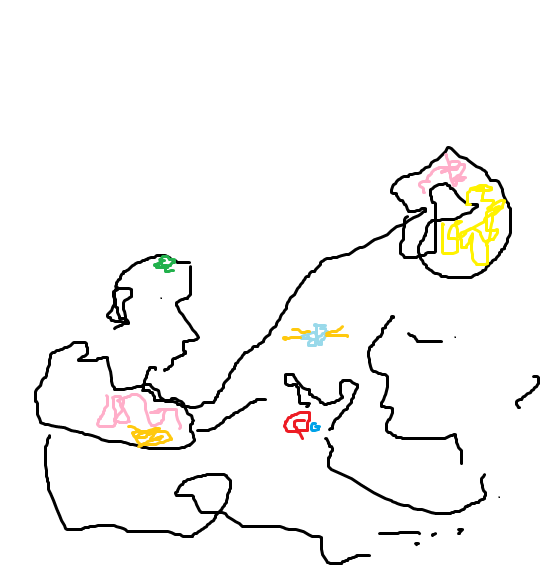CASE-STUDY
"Michael"
Michael is eight years old. He was born with a genetic condition which affects his health in many ways. He may experience spasm throughout his body and get stiff and contracted with stomach pains. This affects his breathing and he is prone to chest infections. He is gastric fed and in a wheelchair. Michael startles when there is strong or flickering light or when there are sudden sounds or movements close to him. He is Non-verbal. For sessions he is hoisted onto a mat with cushions for support.
Tree/growth/body
The sessions integrate Therapeutic Touch, movement and song-stories. The story mirrors the pattern of Therapeutic Touch in the sessions which helps Michael to integrate and become aware of his body. The story is about a tree with strong roots, a nest in its' branches and birds growing up in the nest and making journeys away from and back to the tree and their home. In the story Michael is at the bottom of the tree learning the songs that the birds sing which he sings in a deep voice as a "Belly-song". He encourages a girl who is with him at the bottom of the tree to sing in her own way even though she is shy and unconfident. The girl trusts Michael and the differences in their voices creates interest in both of them.
Patterns in a Session
Michael is a sensitive child and responds well to the internal connections that become alive for him through the imaginative and practical nature of the sessions. It is the relationship that is central to his growing trust and engagement. It enables him to gradually reach out and become engaged through his breathing, physical movement and emotional presence.
The session begins in a quiet way, bringing warmth to the center of Michael's body at his belly, chest and lower back with the open palm of the Practitioner's hand. The Practitioner has a feeling of warmth spreading from a place of stillness in this first contact. Michael gradually relaxes and seems to meet the Practitioner's hand more fully as his breath rises into the contact and falls away again. He seems gradually to rest more fully on the mat. The practitioner follows with her hand this rising and falling breath. In time Michael makes sounds and the practitioner follows or playfully engages in these sounds, going low and high with long sustained notes or more rhythmic clipped sounds. The hands of the practitioner follow this conversation so that touch and sound are one. Michael sometimes gazes at his Carer or at the Practitioner for sustained periods of time, then breaks off to breathe, yawn or stretch.
As he continues to stretch and reach out, he is supported by the Carer-Practitioner to follow and try out in different ways the movements that interest him. This could be rocking to sit upright and then dropping back down again to meet the mat, rolling from side to side, pushing with his feet into contact with the Carers' hand or being supported to raise his arm above his head and to explore his own face or the Carer's hand. For a child like Michael who can not at present pattern his own movements into a sequence because of both low and high muscle tone and neurological stress, it's hard for him to develop an idea of moving on his own. The sessions give him a practice space for moving as self-expression simply because it's fun and because it's a celebration of being together. This joint dance of part-guiding and part-following creates a spontaneous and light movement for both child and Carer and in this way helps them connect. The Practitioner models this connection at first and gradually encourages hands-on work from the Carer. It is essentially a creative dance that all three are involved in as they navigate together being in the foreground and the background of this dance. The child is always at the center.
Afterwards
After the session there is a marked difference in Michael. He seems larger, more fully there and at ease on the mat.The features on his face are soft and relaxed. There is an openness to his body and alert brightness in his eyes. He seems both more self-reliant and more involved with others.
*Note: name has been changed to protect the identity of the child.
What do Staff Say?
Feedback Form from LSA attending sessions with Michael: Nov 2018
- What have you enjoyed most about the sessions?
"The connection I can make with the child and Practitioner, the transformation I see in the child during the session – muscle tension release, connection of the child with the world and with himself".
- What has surprised you most about the sessions?
"How simple and obvious is it to “read” communication of a non-verbal child".
- How have these sessions affected how you see your own role in this child’s self-expression and ability to feel at ease?
"Massively. I became more confident in using therapeutic touch, my voice and that helps me understand what my child is trying to express but also helps him express himself. We have definitely built a rapport with each other which makes us both at ease when we work together". (Beatrice)
